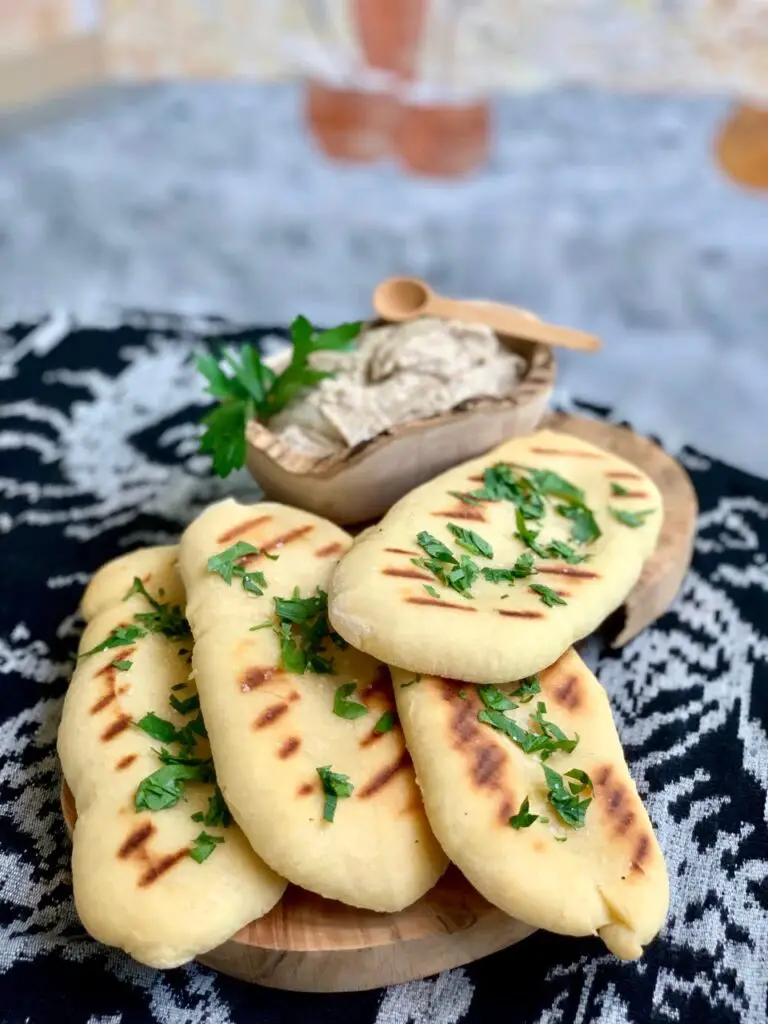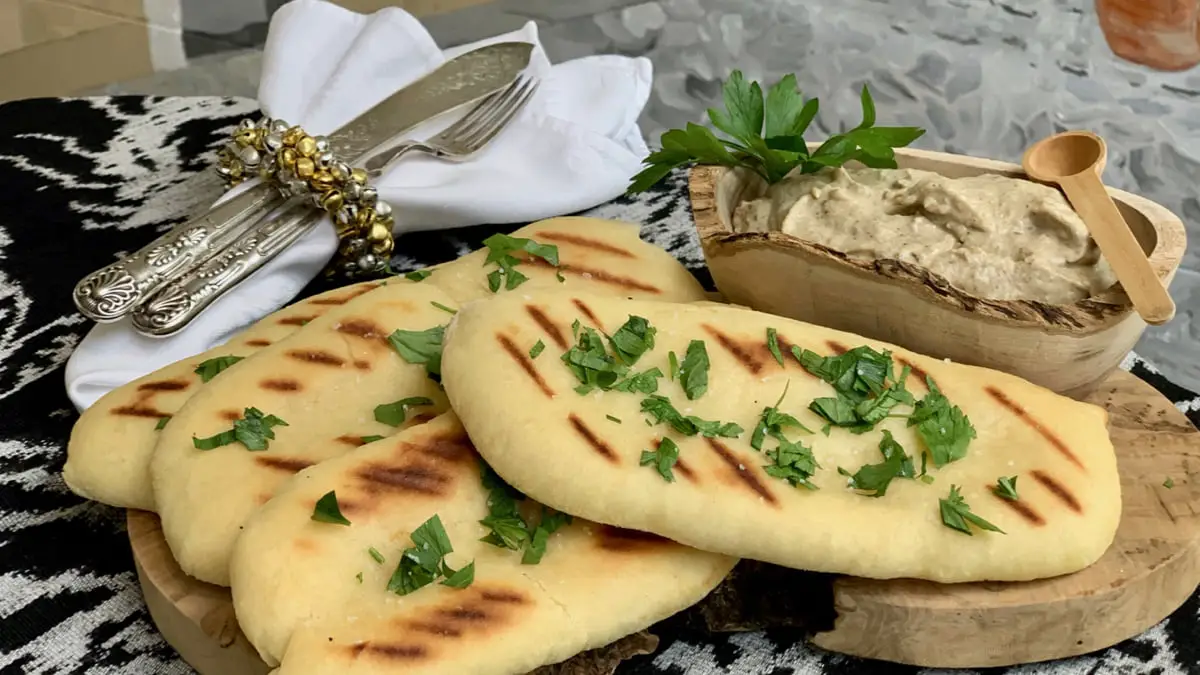Traditional Easy Homemade Mediterranean Pita Bread Recipe, with fresh herbs or dried spices, are a favorite with sandwiches, dips or tapas spreads!
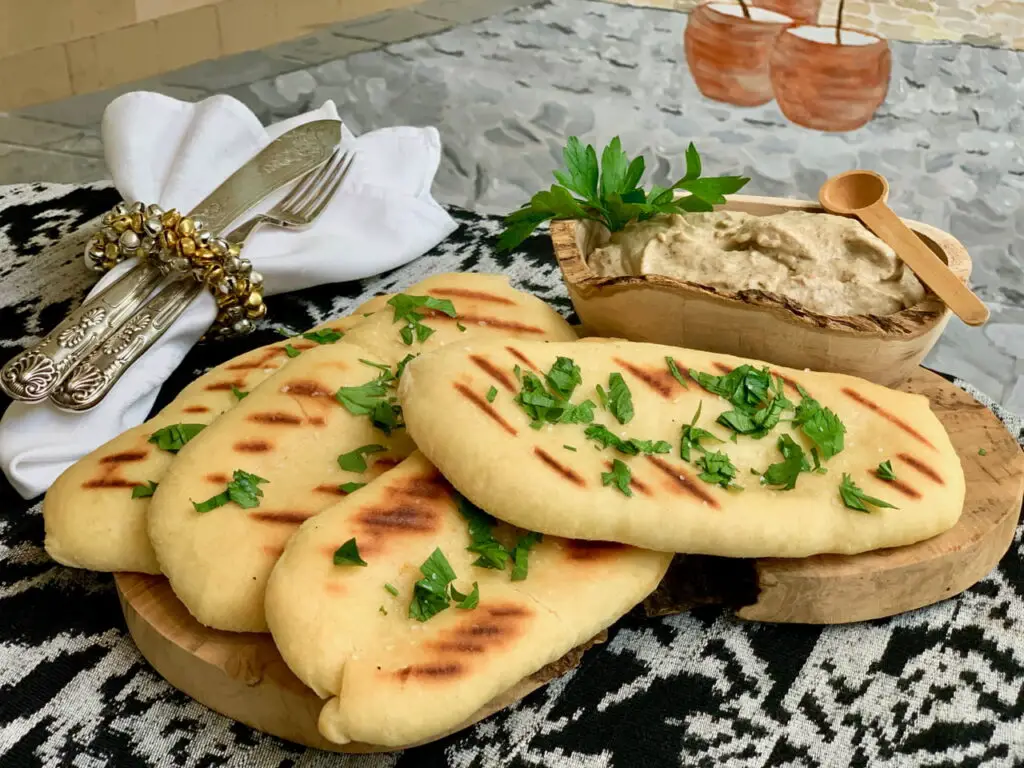
Pita bread is easy to make, keeps beautifully in the freezer and the dough can even be prepared in advance.
Take a moment to read through the my step-by-step tutorial and watch the video for plenty of visuals.
Homemade Flatbread vs Pita Bread
Most often flatbread is flour and liquid, quickly mixed into a batter that cooks fast on top the stove or over fire.
I’ve often known it to be a little crisp, like a cracker, but great for scooping wet dishes, like a Lamb Tajine, or Mediterranean dips.
Sometimes the texture will depend on the amount of flour and oil in the mixture.
Is It Worth It To Make Your Own Pita Bread?
Having grown up with three sisters and a Syrian mom who was a fabulous cook, then later in life raised four of my own children, we can all tell you, Yes!
When you’ve taken the time to braise a beautiful Lamb Shank, which we often do, and want a great sandwich the next day, you will want homemade pita bread.
Grocery store pita bread lacks so many elements of good pita bread, but most of all the texture is just not good.
With just a few ingredients you probably already have in your kitchen, we can make this pita bread easily together.
Grocery Store Pita vs Homemade Pita On Guy’s Grocery Games!
Picture it; there I am on national television, cooking on Guy’s Grocery Games and the challenge inspires me to make Koftas!
The challenge? I had to use prunes and bran cereal in a dish I could prepare in 30-minutes. Ugh!
The lamb koftas, with ground prunes, bran and lots of spices, came together beautifully, though more moist than my ‘real’ koftas.
If there was time to whip up homemade pita bread, it would have had more substance and texture to support this weird kofta.
I grilled the pita from Guy’s Grocery, basted with lots of olive oil and a sprinkle of za’atar and it was the best I could do in 30-minutes.
And Yes, I won!

Is Mediterranean Pita Bread and Greek Pita Bread The Same?
Here’s something you might not know; pita is traditionally thicker than flatbread.
Though flat, it is a softer, bread-like texture, made with yeast.
Traditional Mediterranean flatbread is not pita.
However Mediterranean pita and Greek pita are, the same.
Both have the same ingredients, and often cooked in the same way.
Homemade Pita Bread Recipe Today vs Ancient Times
Let’s talk about ancient nomad times of the Middle East, when bread was quickly mixed, left to sit out in the sun to ferment all day.
When dinner time rolled around, it was cooked on open fire, often on a flat metal plate set on top of the fire.
Think of a pancake type of batter; flour, yogurt (often soured sheep milk) and some type of fat.
Depending on the meal it was to be eaten with, honey or herbs would be added to the batter.
We sure do have it easy today, when it comes to making homemade bread!
Pita Bread – The Middle Eastern Fork!
Pita bread was an important aspect of the meals eaten, for one very good reason; no forks!
A little leaven in the batter and it creates a softer, yet more sturdy type of bread.
Something my challenge could have used on Guy’s Grocery Games.
Tearing off pieces of pita and using to scoop (like a little spoon), was (often still is) the way it was done; or else you eat with your fingers.
My Mama’s Syrian Bread
Having grown up with a Syrian mom, I learned to cook all things from scratch at a young age.
Syrian bread was always in our home and the smell of it baking is an olfactory memory that lingers in my mind to this day.
As a little girl, I remember the type of yeast my mother would use, a yeast not found in grocery stores today.
It was a cake yeast, that looked like a compressed little cake of fermented gum.
The best pita bread recipe, for Syrian bread, is made with that yeast, creating such a smooth dough and a light and fluffy pita dough.
We will, however, make the second best Syrian bread recipe right here with this easy recipe, using instant yeast!
Step-By-Step Tutorial On A Great Pita Recipe
Now that we make yeast bread with instant yeast, there is little that can go wrong.
So, roll your sleeves up and let’s do this!
Step 1
First, we must make the dough with flour, water, yeast and olive oil.
This step is the same for all-purpose white flour, whole wheat flour or spelt flour.
The only difference is that with the heavier grain flour, a little extra olive oil helps to make the dough more pliable to work with.
Whether working the dough with a bread hook in a mixer or by hand, the dough doesn’t need to be kneaded a lot, only until a soft dough ball is formed.
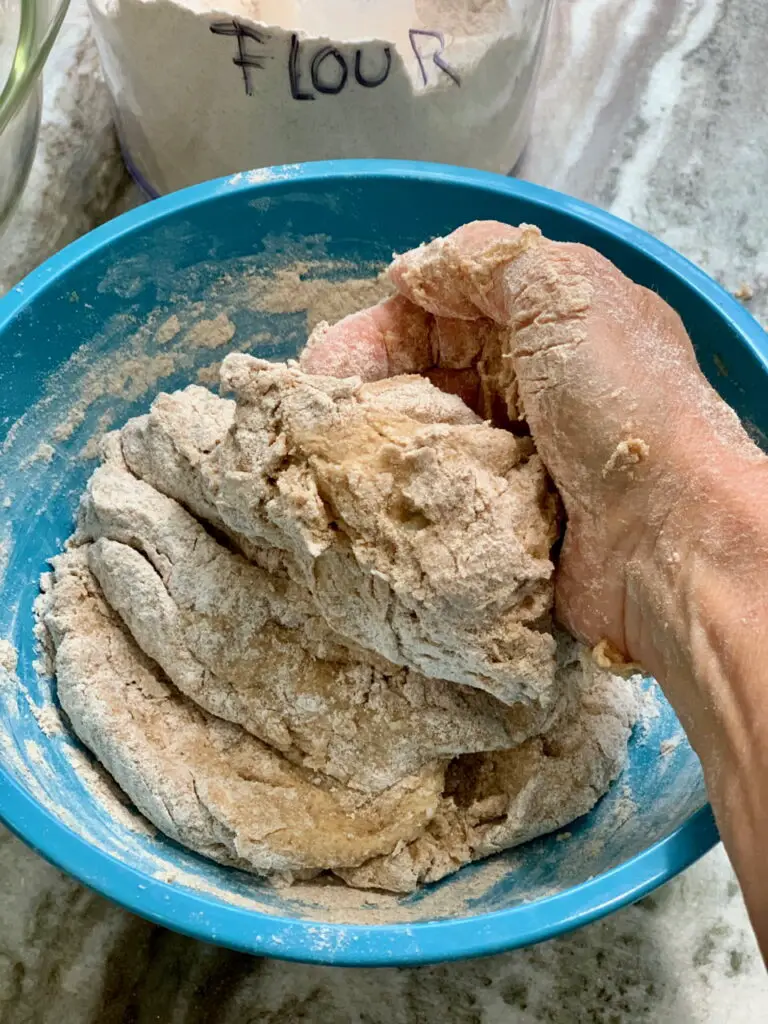
Step 2
Secondly, the dough needs to rise in a warm place.
During the winter months, an oven that is preheated to 115 and then turned off, is a great place.
In the summer months, room temperature or in front of a window works great.
There isn’t much to do other than cover the dough in a bowl large enough for it to double in size, and wait.
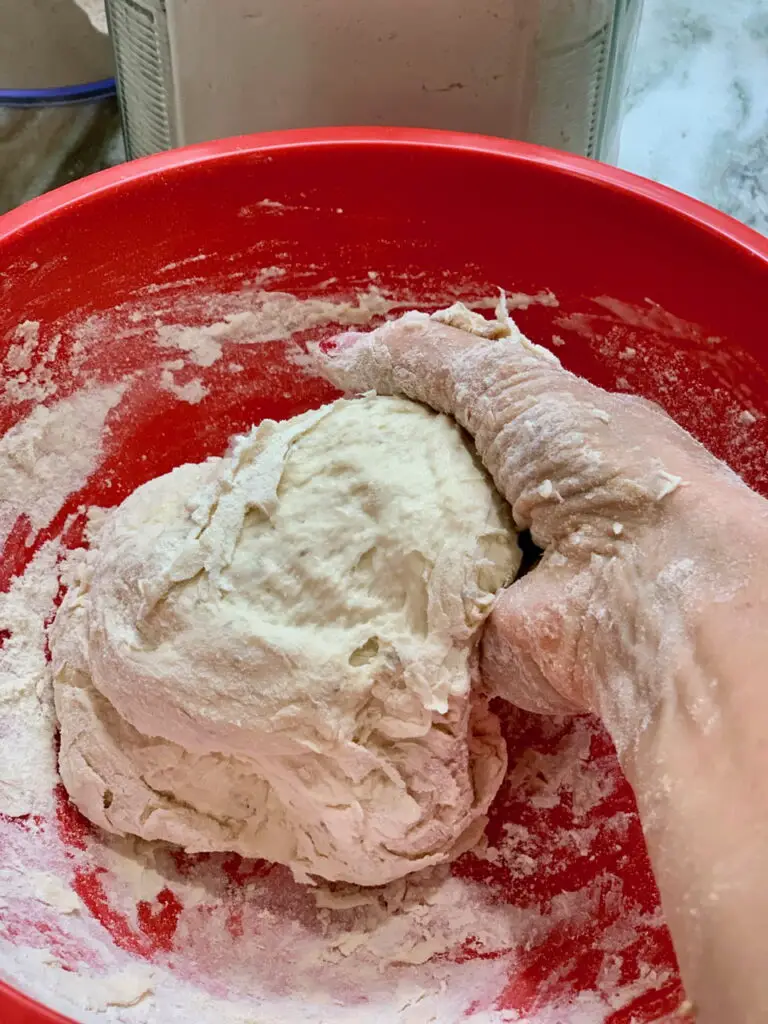
Step 3
Once the pita dough rises, gets cut into equal portions, depending on the size you want your pita to be.
Those sections are rolled into round balls in the palms of your hands, and then rolled out on a floured surface, with a rolling pin.
I prefer to use a small wooden roller when making individual size pita, otherwise a regular rolling pin when making large pita.
Now you will cover with a tea towel and allow to rest at room temperature for 30-minutes. This step will make the dough puff up when cooked and help create pita pockets.
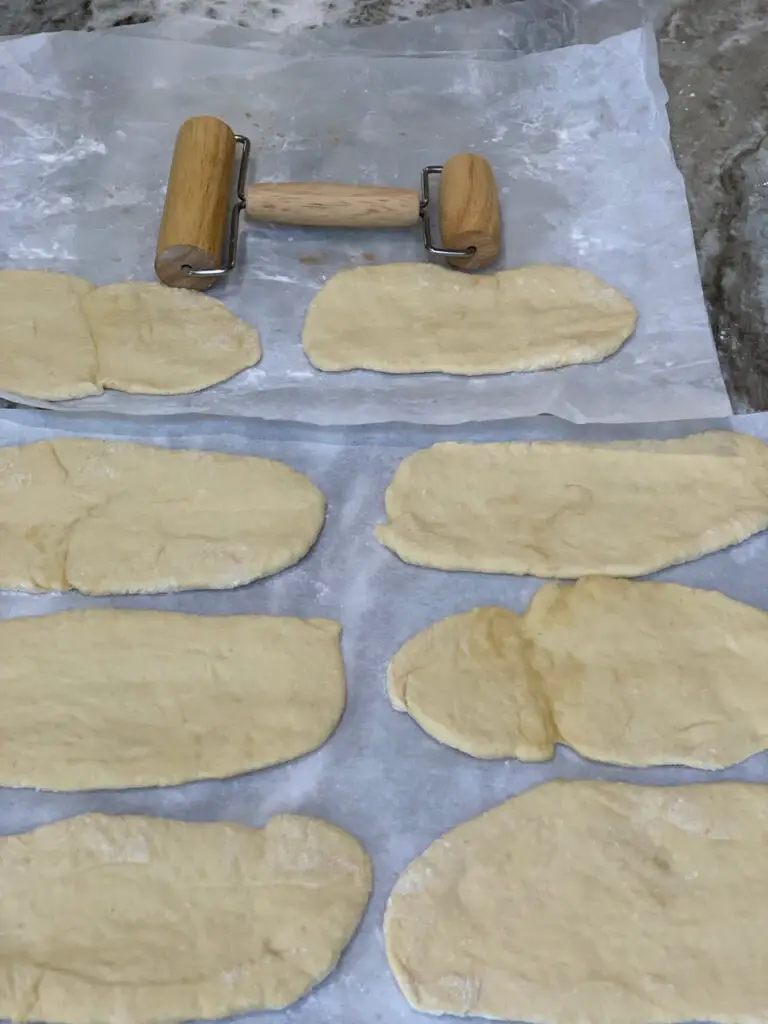
Step 4
This step is the cooking step, and this, for me, is what makes pita different from baking bread or a pizza crust.
On top of the stove, on a hot oiled cast-iron griddle, quickly sear both sides of the pita, barely 30-seconds, just enough to create grill marks and to crust the surface of the dough.
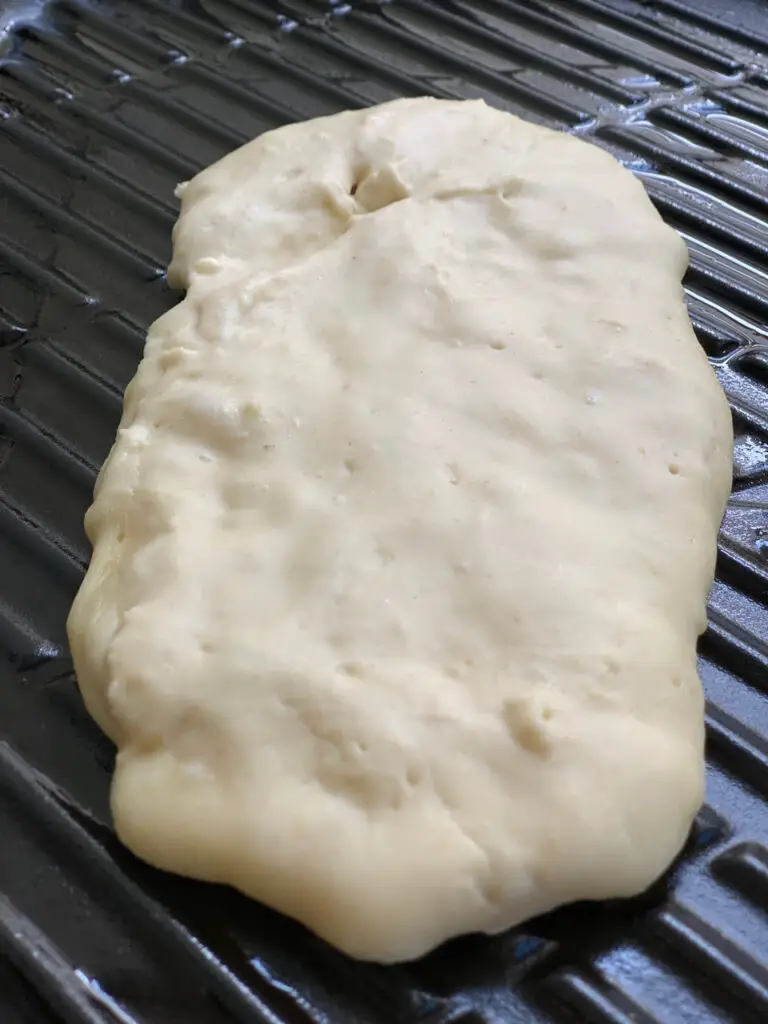
Step 5
Transfer to a parchment paper lined baking sheet.
If using dried herbs, this is when I brush the pita with a little more olive oil, sprinkle coarse salt and the dried herbs.
Pop it into a hot oven for 10 – 12 minutes to bake, and it is perfect!
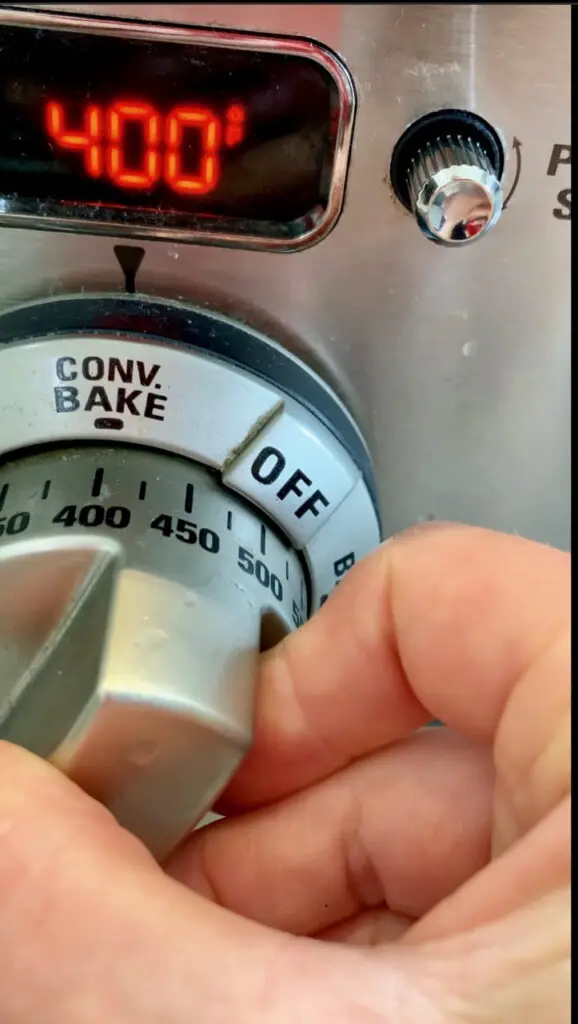
If using fresh herbs, while the pita is hot, brush a little olive oil, sprinkle coarse salt and add the fresh chopped herbs. Scrumptious!
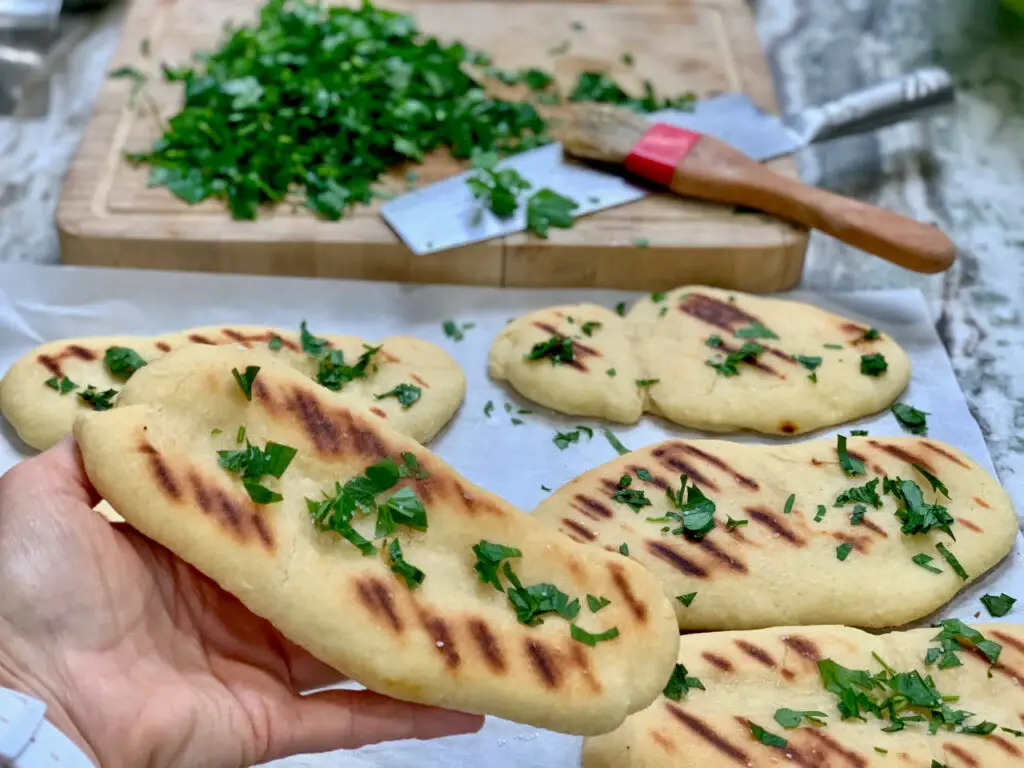
Storage and Freezer Tips
Bake it now or bake it later?
Let’s say you are having a large gathering later in the week or month, and you want to serve a basket of homemade pita bread.
The last thing you want to do is fiddle with bread while you already have enough to do.
Easy. Make the dough up to step-3, shape the dough in balls, transfer those dough balls to an airtight container and freeze them.
When ready to cook, simply thaw the dough, pick up on step-3 and continue to roll, rest and cook.
How Is Pita Dough Different From Pizza Crust?
Here’s the good news about our two favorite types of bread dough to serve with things on top, or between…
Both pita dough and pizza dough are exactly the same dough!
Once the dough is made, risen and ready to shape and cook, here is where you either shape it for pita or roll it out to cook on a pizza stone!
An added tip about making this dough for pizza; I often sprinkle a little grated cheese in the dough batter before letting it rise!
What To Serve With Mediterranean Pita Bread
Goodness me, do we have enough room on this page to tell you all the delicious dishes to serve with Pita Bread!
In fact, when cooking on The Great American Recipe program with PBS, I made sure that I made some type of bread with as many dishes as I could.
Episode 2, I made Shakshuka on the show and believe you me, I was determined to make a quick cross between a pita bread and a flatbread to serve with it, in under 60-minutes!
I did and the judges were wowed that I made my own bread to dip in the egg!
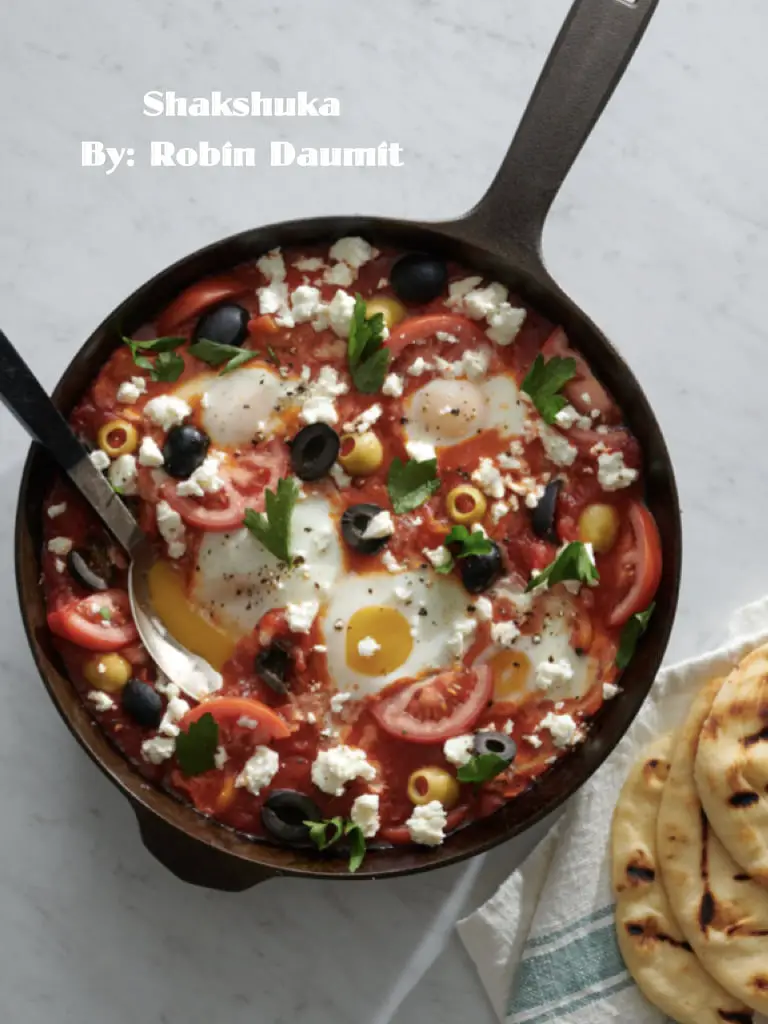
Mediterranean Dishes To Serve With Mediterranean Pita Bread
Here are just a few of the traditional Mediterranean dishes I will serve a pita or flatbread with:
- Baba Ganoush – A creamy dip made from roasted eggplant, tahini and spices, that spread deliciously on pita bread.
- Traditional Hummus – My mama’s authentic recipe of velvety pureed cooked chickpeas, homemade tahini, garlic and lots of lemons.
- Pumpkin Hummus – Autumn’s sun ripened pumpkins, with red lentils instead of chickpeas and a splash of chili oil.
- Beet Hummus – Bright and flavorful garden harvested beets, chickpeas, tahini, sumac, ginger and lots of lemon.
- Tabbouleh – My favorite gluten-free millet tabbouleh with summertime tomatoes, parsley and cucumbers.
- Tzatziki sauce – Typically a Greek dish served with pork gyros or lamb gyros, though I serve tzatziki on many of my meat dishes, and use it instead of ketchup on my Spanakopita Burger.
- Cilbir – A perfectly poached egg on top of garlic infused Greek yogurt, and yes, I grew up making yogurt too!
- Koftas – Homemade pita bread is perfect for serving koftas on top. I like to think of koftas as Mediterranean burgers!
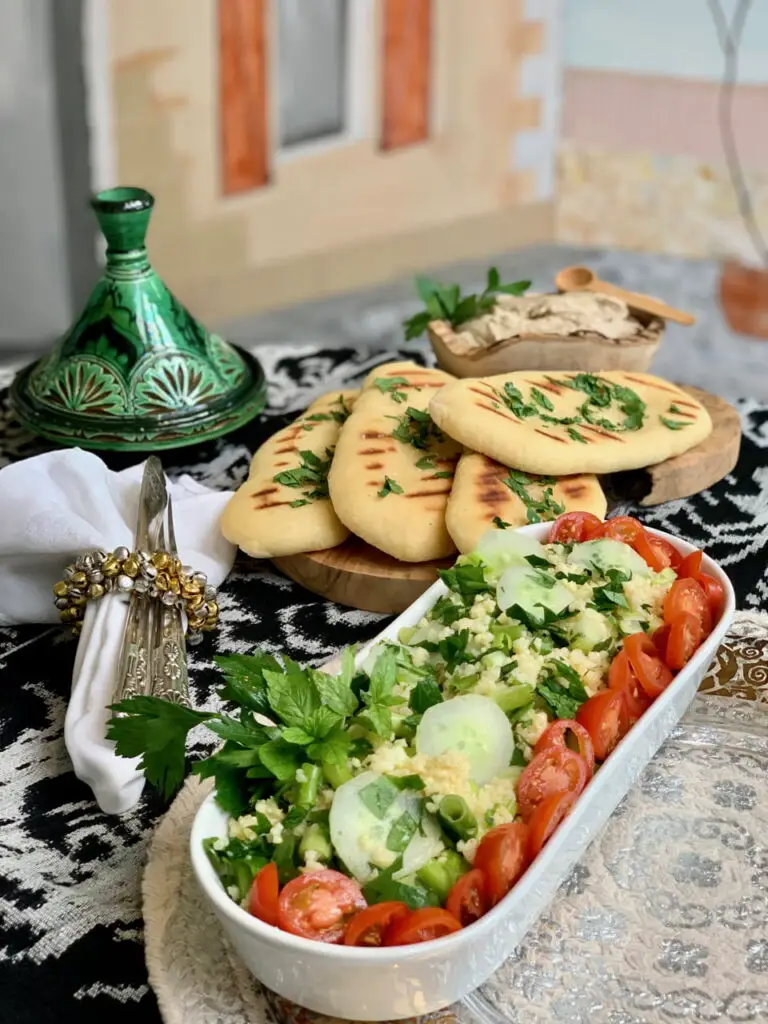
Pumpkin Pita Bread
Oh yes I did! I created an American twist on my favorite pita bread recipe!
My Pumpkin Pita is a definite for the autumn months and I serve it with Pumpkin Hummus!
The pureed pumpkin makes up a little of the liquid used in the dough.
Gives the pita bread a beautiful color and delicate flavor.
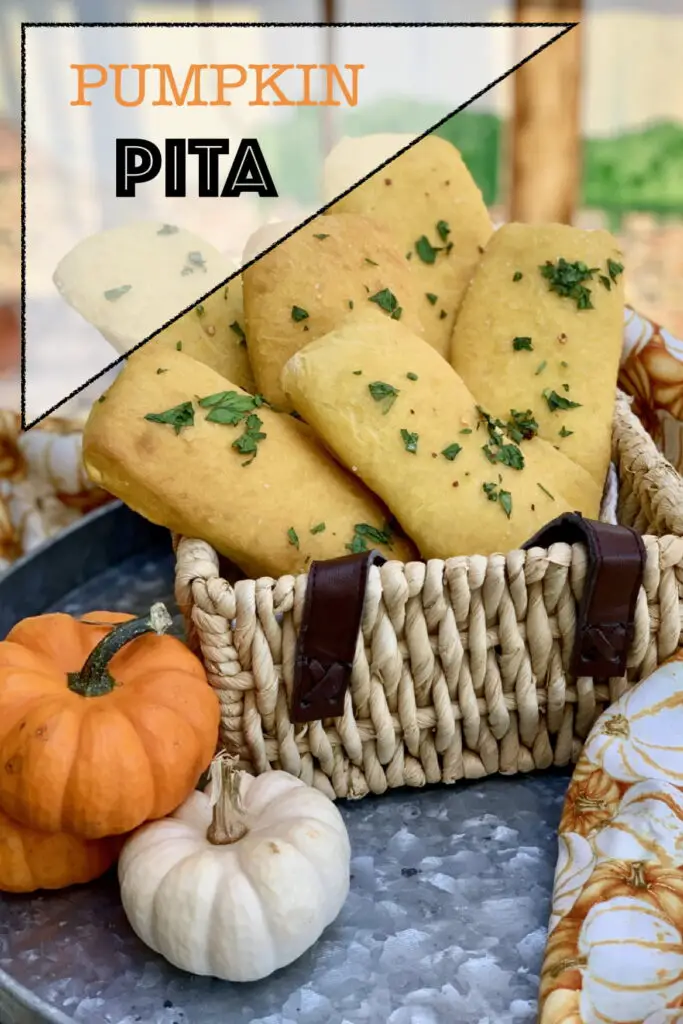
What Type Of Flour To Use
If you are new at making yeast breads, your first time should be easy enough to bring you back.
For this reason, use all purpose flour or bread flour.
They have plenty of gluten to make the dough rise easily without too much kneading.
Once you become confident in your bread making, you can venture out and use whole wheat flour, or spelt flour, which has become a favorite of mine.
A heavier grain flour requires a little more working of the dough, but definitely worth it.
I have little to no experience in making gluten-free pita bread but if you have a reliable recipe, I’d love to try it.
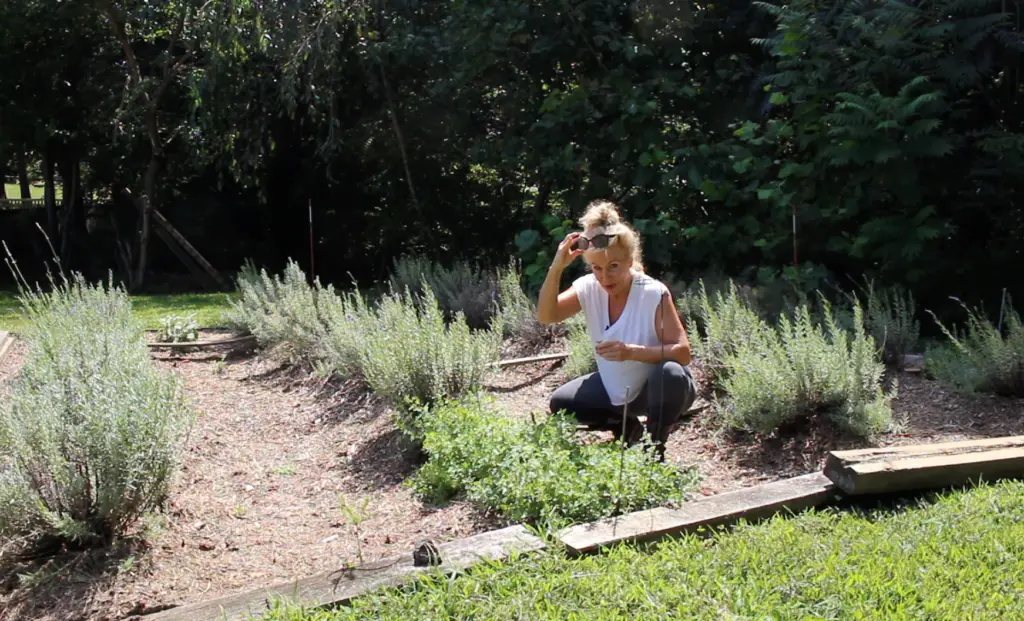
Adding Herbs To Mediterranean Pita Bread
Why add herbs to pita bread? Taste!
When serving a basket of freshly baked pita bread with either dried herbs or fresh herbs, the bread becomes almost a meal in itself.
If you’re kookie like me, you will grow your herbs and use them fresh or dry them and mix your own spice mixes.
Two of my favorite spice mixes to use with pita bread are Za’atar and Ras el Hanout.
For sure, your guests will know ‘this is not store bought pita’!
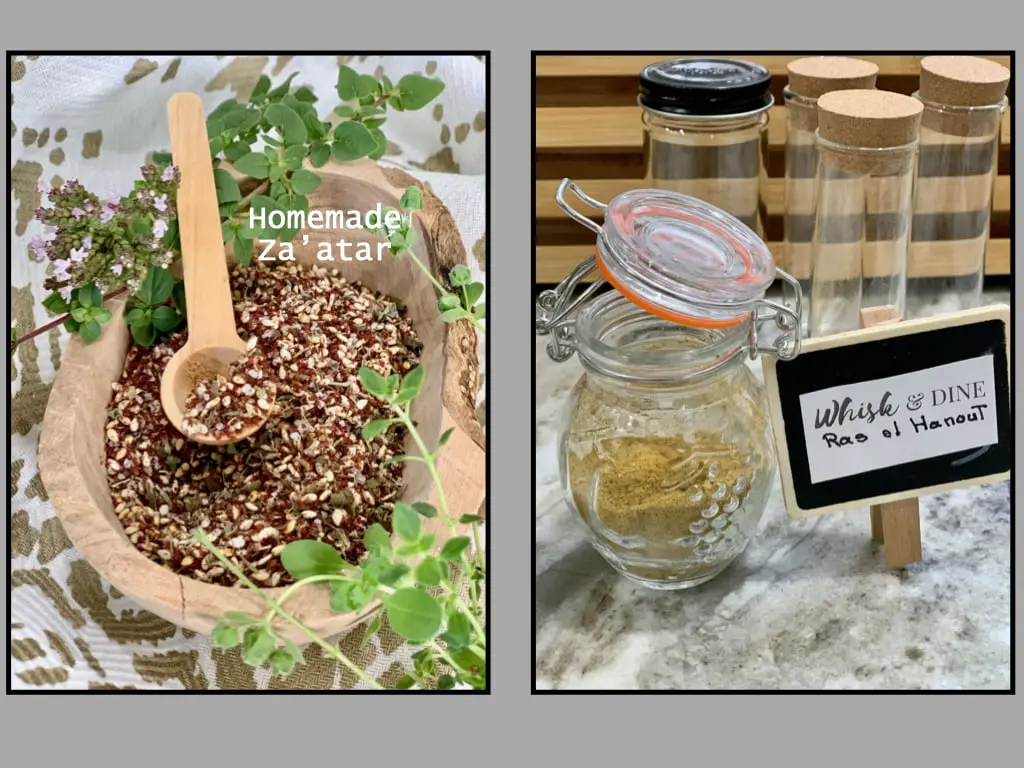
Ingredients Needed
- Yeast
- Sugar
- Salt
- Olive oil
- Water
- Flour
- Coarse salt
- Fresh herbs (optional)
- Za’atar (optional)
Equipment Needed
- Mixing bowl
- Wooden spoon
- Measuring cup
- Measuring spoons
- Basting brush
- Rolling pin
- Stovetop griddle or cast iron pan
- Cutting board (for herbs)
- Knife
- Stovetop of burner
- Oven
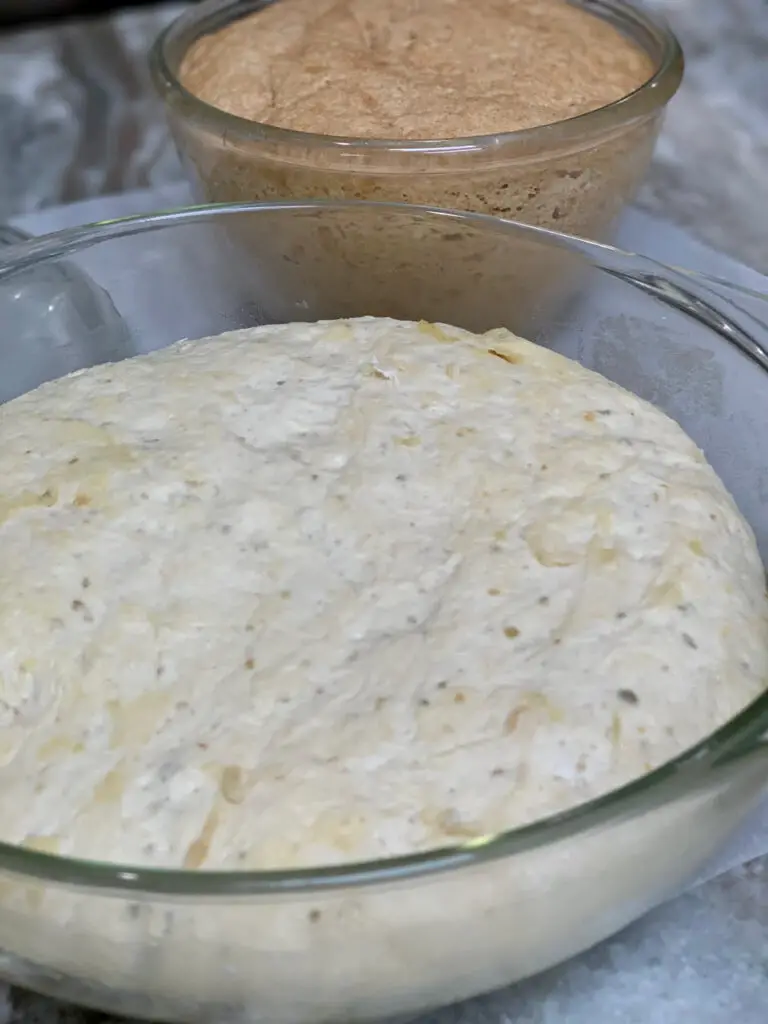
Easy Homemade Mediterranean Pita Bread Recipe
Equipment
- Cast iron pan or griddle
- Baking sheet
- Large mixing bowl or mixer
Ingredients
- 2 tsp Yeast
- 2 tsp Sugar
- 1 tbsp Salt
- 2 tbsp Olive oil more for basting
- 1 1/4 cup Water
- 4-5 cups Flour more for dusting
- 1 tbsp Coarse salt
- 1/4 cup Fresh herbs optional
- 1 tbsp Dried herbs optional
Instructions
- Proof the sponge – In a stand mixer with a dough hook attachment, a mixing bowl or simply a large bowl with a wooden spoon, place the yeast, sugar and lukewarm water and allow to sit for 1-2 minutes to dissolve.
- Add the salt, olive oil and a cup of the flour, into the yeast mixture and stir on low speed to bring the ingredients together. Slowly add flour and stir until it becomes difficult to stir. If using a mixer with a dough hook make certain to scrape down the sides of the bowl.
- Forming a dough ball – At first you will have a sticky dough, but as you continue to work in more flour you will have an elastic dough, but continue to work in as much flour as needed until it forms a dough ball.
- Rising the dough – Transfer the dough to a clean and lightly oiled bowl, cover with plastic wrap and allow to sit out, room temperature, or a warm place until the dough doubles in size, about an hour. Once the dough rises, punch it down and let the dough rest for 5-minutes.
- Shaping the risen dough – Sprinkle a little flour to create a lightly floured surface. Transfer the dough to the floured surface. Roll out the dough, by hand, and cut into 8 pieces. With a floured rolling pin, roll out each piece into an flat/oval shape, about quarter-inch thick. Leave each of the shaped pieces of dough on the floured surface and cover with a kitchen towel or tea towel. Allow the dough to rest for 30-minutes.
- Cooking the pita – Preheat the oven to 400. On top of the stove get a cast iron pan, cast iron skillet, or cast iron griddle hot. We want a hot pan and a hot oven, because we will work quickly with the dough. Brush the hot pan with olive oil and place each pita bread onto the pan, a few at a time, quickly to get grill marks, of just to brown quickly, maybe 1-minute on each side. Transfer to a parchment paper lined baking sheet. If using dried herbs, now is the time to sprinkle on top of the pita bread along with a little coarse salt. Bake in the oven for about 10-12 minutes or until golden brown and puffed up. If using fresh herbs, sprinkle onto of the pita bread, hot out of the oven.
Video
Notes
- Pita freezes well. To reheat, just pop in the microwave for about 25 seconds so the pita becomes soft again.
